Ratios of sine, cosine, and tangent
What is
sin = (opposite)/(hypoten use) , c o s i n e = (adjacent)/(hypoten use) , tangent = (opposite)/(adjacent)
Period, phase shift, and amplitude of
f(x) = -4sin(4(x-pi/2))+7
What is
period = pi/2, phase shift = pi/2 to, amplitude = 4
Find the length and slope of the segment that connects (7,3) and (13, 7).
What is
l=sqrt(52) , m=3/2
Apply the Rational Root Theorem
P(x) = 7x^17+sqrt5x^6-x^3+4x^2-8x+6
What is
±1/1,±1/7, ±2/1. ±2/7, ±3/1, ±3/7, ±6/1,±6/7
Two key points of
h(x)=e^x
What is (0,1) & (1, e)
Rational Functions may have what type of asymptotes?
What is Horizontal, Vertical, and Oblique Asymptotes
What is the starting point of sin(x) and what is the starting point of cos(x)?
What is (0,0) & (0,1) respectively
To have an inverse function, a function must be a one-to-one correspondence. To fulfill this requirement, the graph needs to pass what test?
For which two type of functions may we encounter extraneous solutions and need to check our answers?
What is radical and rational functions
If
sin=3/8, tan= 3/6
, what is cosine?
What is
cos = 6/8
Find the radius of a circle if a central angle of 20° intersects an arc of length
pi/2 units
What is r = 4.5
Find the x-intercept, y-intercept, and slope:
8x - 6y = 24
What is
x: (3,0), y: (0,-4), m=4/3
If P(x) is a polynomial with zeros at
x=2, x=-sqrt(15), x=4+2i
, what is its minimal degree and what other zeros do we know about?
What is
D=5, x=sqrt(15), x=4-2i
Amount on deposit after 100 years if $2,000 is invested at 5% interest compounded quarterly and no other deposits are made.
What is
2,000xx(1+.05/4)^(4xx100), $287,768.17
What is the amplitude, period, and phase shift of the following
-3sin(2(x-pi/2))
What is amplitude = 3, phase shift =
pi/2 units
, and period =
pi units
To find an inverse function, what is the first step one should take?
What is switching x and y
Solve the following:
2/x=1/(x+2)
What is x = -2
Find
bar (BC)

What is
approx 5
Find c
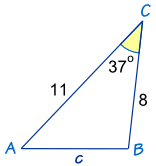
What is
c approx 6.7
Equation of the line through (2, 3) and perpendicular to 2x + y = 10
What is
y-3=1/2(x-2)
Degree, Leading Coefficient, constant, and end behavior of
f(x) = -2(x-2)(x+1)(x+2)(x-1)
What is
D=4, LC=-2, C=-8, Tails: l=downarrow, r=downarrow
Find f(-3) and f(30) if 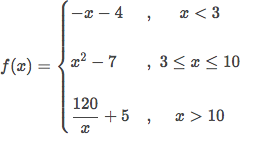
What is
f(-3) = -7
f(30) = 9
What are the zeros & the horizontal asymptote of
(x+3)/(x^2+2x-3)
What is (-3, 0) & y=0
Write the function of a trigonometric curve that has an amplitude of 5, a period of 4π, and a phase shift of π/3?
Find the inverse function of
f(x)=4x-9
What is
f^-1(x)=(x+9)/4
Solve the following:
sqrt(x+3)=4
What is
x=13
Find
angle A

What is
angleAapprox53.1°
Find b

What is
bapprox9.8
Factored Form and zeros of
y=x^2+5x-14
What is
y=(x-2)(x+7), x=2,-7
Zeros of
P(x)=(x-2)^5(x+8)^6
and behavior at those zeros
What is
x=2 rightarrowcrosses, x=-8rightarrowt ouches&turns
Evaluate for x = -3.25 if
f(x) = abs(x-2)+3
g(x) = [x]
What is
f(-3) = 8.25
g(-3) = -4
What are the vertical asymptotes and holes (if any) of
(x+3)/(x^2+2x-3)
What is hole at x = -3 and V.A. at x = 1
Graph the following:
2cos(2(x-pi))
What is
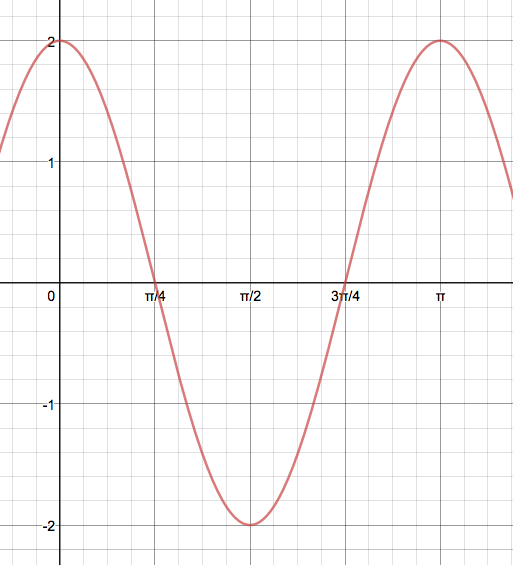
Find
cos(tan^-1(4/3))
What is
3/5
Solve the following:
e^(2x-3)=7
What is
(ln(7)+3)/2
From the top of a 180ft cliff, the angle of depression to the base of a lighthouse is 22°. How far is the lighthouse from the base of the cliff?
What is
approx 445.5ft
Find
theta
if the angle is in standard position and the terminal ray passes through (-7, -9).
What is
theta approx 232.1°
Vertex Form, Vertex, and Classification of Maximum/Minimum of
4x^2-16x+18
What is
y=4(x-2)^2+2, Mi n: (2, 2)
Divide
3x^3-4x^2+5x-7
by
x^2-2
What is 3x-4 R11x-15
Graph:
f(theta) = 3sin(theta -pi/2)
What is
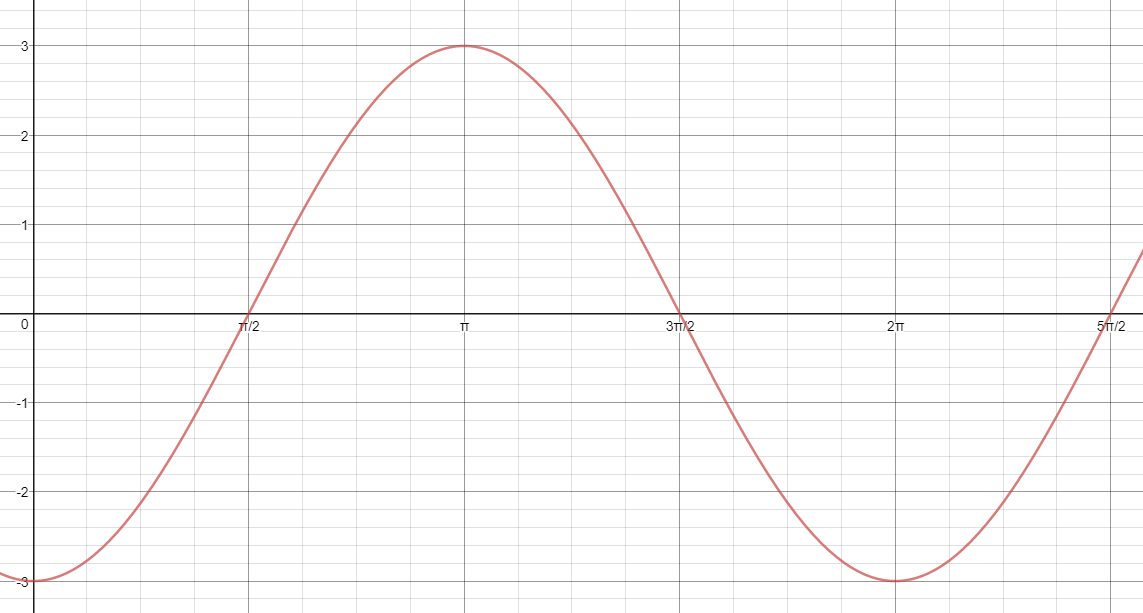
Determine whether the following has a horizontal asymptote, oblique asymptote, or neither. If it has an asymptote, find it.
(x-2)/(2x^2+4x-7)
What is y=2x+8
Graph the following:
-sin(4(x-pi/4))
What is
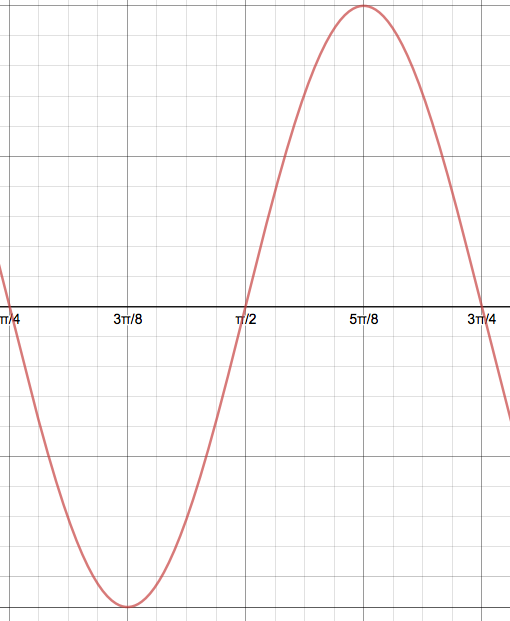
Find all angles between 0 and 360 degrees, such that
cos^-1(x)=0.5
What is 60 and 300 degrees
Solve the following:
sqrt(x+5)+sqrt(x)=5
What is x = 2